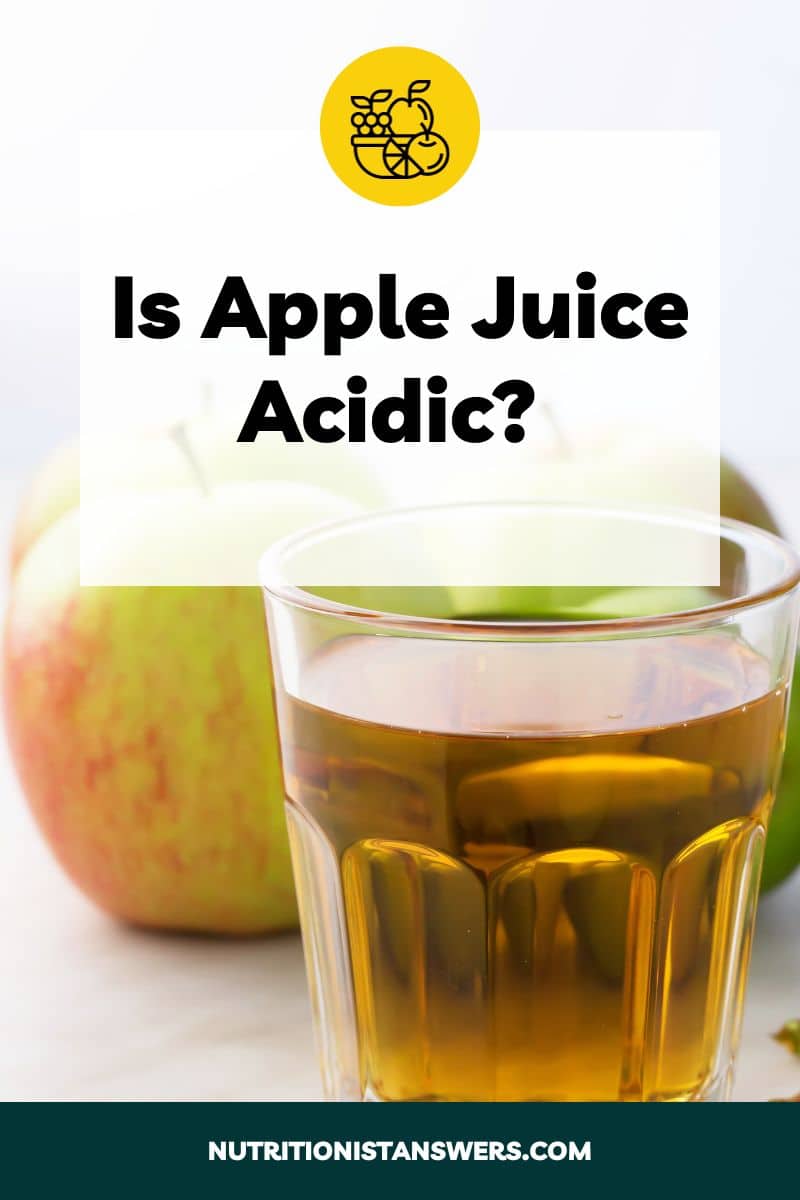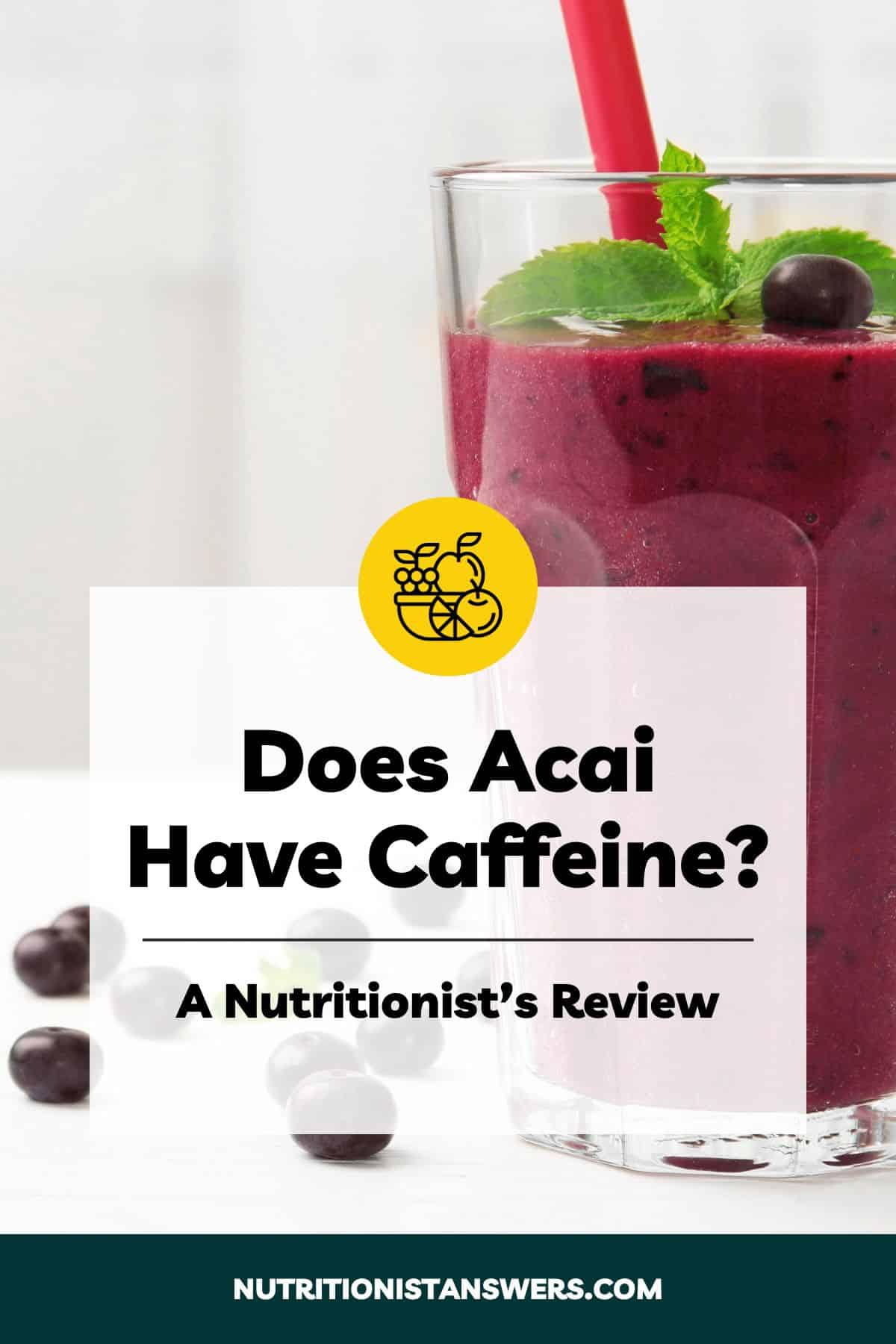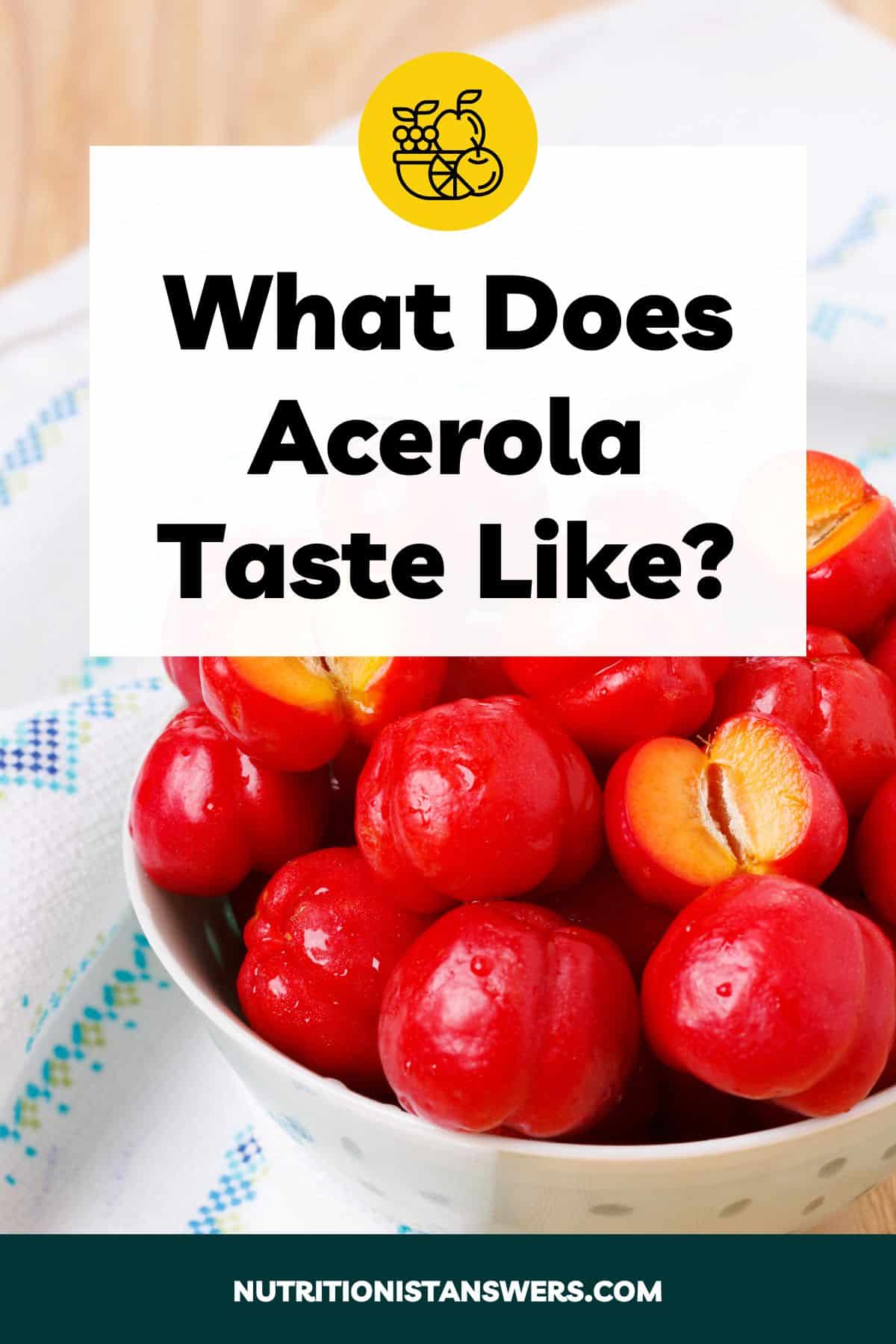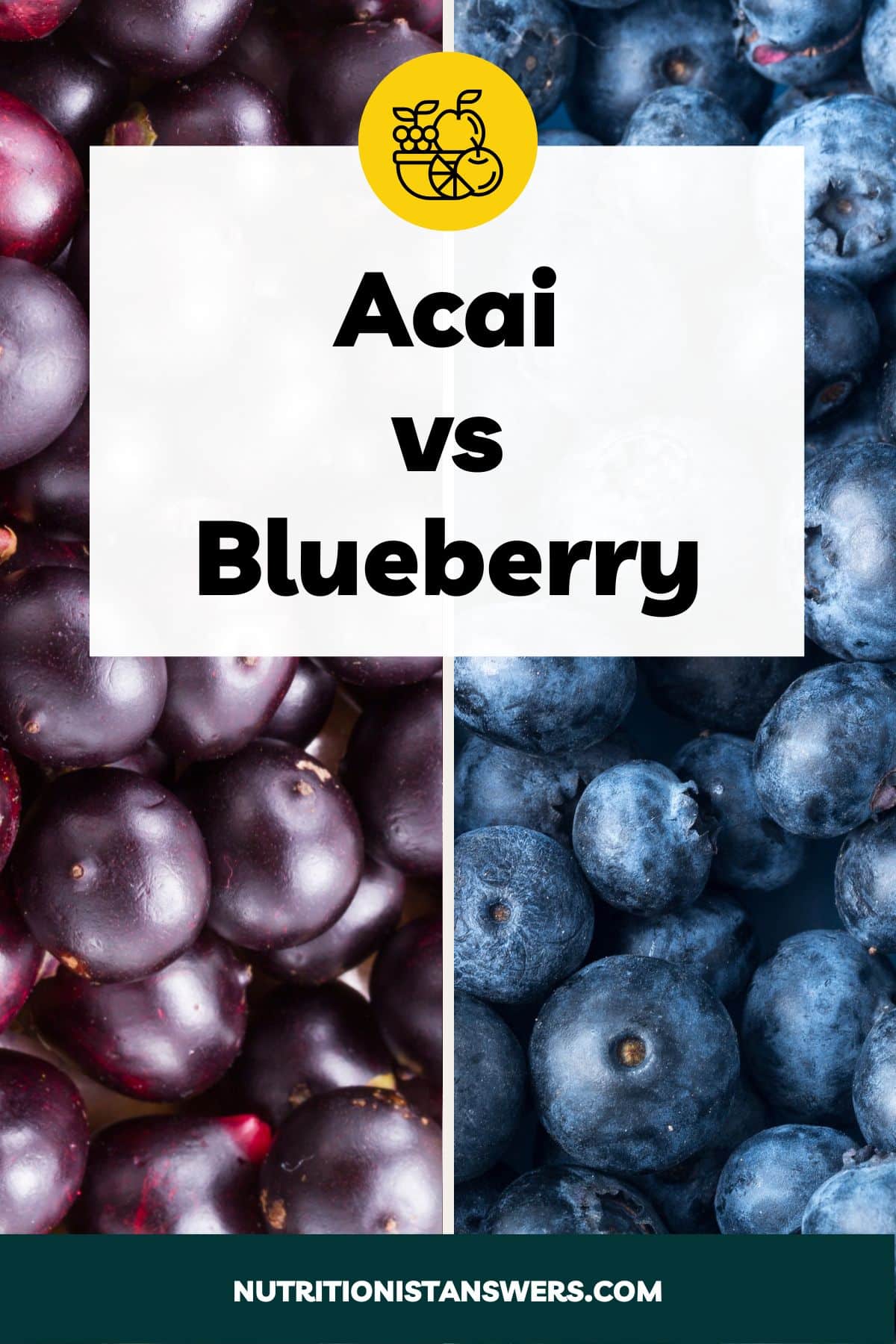Apple juice is a popular beverage enjoyed by people of all ages for its sweet and refreshing taste.
Like many fruit juices, apple juice is acidic, due to the presence of natural acids that lower its pH below 7. These acids also contribute to apple juice’s tart flavor and numerous health benefits.
In this article, we’ll delve into the science behind why apple juice is acidic, the potential side effects of drinking acidic apple juice, and how its acidity compares to other juices and beverages.
Why is apple juice acidic?
Apple juice is acidic because it contains naturally occurring acids that lower its pH value to 3.5-3.7 (anything below 7 is considered acidic) (1).
Around 90% of the acids in apple juice are in the form of malic acid, which is found in many fruits and gives them a sour or tart taste. Malic acid is also sometimes added to beverages and candies to enhance their flavor (2).
Other acids are also naturally present in apple juice but in much lower amounts. For example, fumaric acid, citric acid, and shikimic acid (3, 4).
Commercial apple juice products may also contain acidic additives like citric acid and ascorbic acid (also known as vitamin C), that act as flavorings and preservatives (5, 6).
Is apple juice more or less acidic than other juices?
Apple juice is less acidic than many other juices, with a pH of around 3.6 (x).
Here is a list of the pH values for various juices, in order from least acidic to most acidic (7, 8):
- V8 100% vegetable juice: 4.2
- Orange juice with calcium: 4.1
- Tomato juice: 4.0
- Orange juice: 3.8
- Apple juice: 3.6
- Cherry juice: 3.5
- Pineapple juice: 3.4
- Grape juice: 3.3
- Grapefruit juice: 3.2
- Cranberry juice: 2.6
- Lemon juice: 2.2
Apple juice is more acidic than V8, tomato juice, and orange juice, but less acidic than cherry juice, pineapple juice, grape juice, grapefruit juice, cranberry juice, and lemon juice.
Keep in mind that acidity can vary based on several factors, including added ingredients. For example, many commercial juices contain citric acid and other additives that lower their pH.
Potential side effects of drinking acidic juices
Drinking acidic juices, like apple juice, can sometimes lead to side effects, including:
1. Acid reflux
Apple juice and other acidic juices may trigger or worsen acid reflux in some people.
Acid reflux occurs when the acidic contents of the stomach flow back into the esophagus, causing a burning sensation in the chest (heartburn) and discomfort.
Some studies have linked drinking fruit juice with an increased risk of acid reflux, and many people report that citrus juices trigger their symptoms (9, 10).
However, research is mixed (11, 12, 13). There are many other factors, beyond the acidity of a food or beverage, that can lead to an increase in acid reflux (14).
If you feel that fruit juices trigger your acid reflux, you may choose to avoid them. Other ways to manage symptoms include avoiding meals within 2-3 hours of bedtime and elevating the head of your bed (15).
2. Dental erosion
The acids in juices, including apple juice, can erode tooth enamel over time, making them more susceptible to damage and decay.
Beverages with a pH value below 4.0 (which includes apple juice) are the most likely to cause erosion, and those with a pH below 3.0 are considered extremely erosive (7).
To minimize the risk of dental erosion from drinking acidic juices, consider using a straw to limit contact with your teeth or rinsing your mouth with water afterward (16).
Less acidic alternatives to apple juice
1. Orange juice fortified with calcium (pH = 4.0-4.1)
While regular orange juice has a pH around 3.8, orange juice fortified with calcium tends to be less acidic, with a pH between 4.0 and 4.1 (1).
Calcium is alkaline and therefore neutralizes excess acid and raises the pH of the orange juice (17).
Orange juice fortified with calcium may also be a good choice for people who don’t get enough calcium from other foods. Just one cup contains more than 25% of your daily calcium needs (18).
2. Vegetable juice (pH = 4.0-4.2)
Vegetable juices made from tomatoes, carrots, and leafy greens are generally less acidic than fruit juices. The pH value will vary depending on the vegetable, but most fall between 4.0 and 4.2 (1).
Juices made from vegetables also offer a convenient way to incorporate more veggies into your diet. The downside is that they don’t contain any of the fiber found in whole vegetables.
3. Coffee (pH = 4.0-5.1)
Coffee has a pH ranging from 4.0-5.1, making it less acidic than most fruit juices (19, 20).
The pH of coffee can vary depending on factors such as the type of coffee bean, brewing method, and roast level. Lighter roasts tend to be more acidic than dark roasts (19).
However, if your goal is to reduce heartburn, you may want to limit your coffee intake. Studies are conflicting, but some evidence links excessive coffee drinking (more than 6 cups/day) with acid reflux (11, 21).
4. Coconut water (pH = 4.5-5.2)
Coconut water is the clear liquid found inside young coconuts, known for its refreshing sweet and nutty flavor. It has a less acidic pH (between 4.5 and 5.2) than apple juice (22).
With about 600 mg per cup, coconut water is also an excellent source of potassium, a mineral that acts as an electrolyte and can lower blood pressure (23, 24).
You can use coconut water as a base for smoothies, blend it with tropical fruits for a delicious mocktail, or drink it on its own in place of fruit juice.
5. Plant-based milks (pH = 5.2-8.2)
Plant-based milks like almond milk, oat milk, and soy milk tend to have pH levels closer to neutral, ranging from 5.2 to 8.2 (25).
These non-dairy alternatives can be enjoyed on their own, poured over breakfast cereal, or used as a base for smoothies.
6. Cow’s milk (pH = 6.6-6.8)
Cow’s milk is one of the least acidic beverages out there, with a pH range of 6.6-6.8 (26).
Not only is it less likely to erode tooth enamel than fruit juice, but drinking cow’s milk is also associated with a lower risk of cavities (27, 28).
And while some research links cow’s milk with acid reflux, a recent trial found that increasing dairy consumption to 3 servings per day did not affect symptoms (29).
Final thoughts
Apple juice contains natural acids that lower its pH between 3.5 and 3.7, making it acidic. Most other fruit juices are more acidic than apple juice, with the exception of orange juice.
Acidic beverages like apple juice may trigger symptoms of acid reflux in some people, and they can also cause tooth enamel to erode, causing damage and increasing tooth sensitivity.
If you’re looking for a less acidic alternative to apple juice, there are plenty of options, such as milk, coconut water, coffee, and vegetable juices.
Amy Richter is a Registered Dietitian Nutritionist based in Missouri. She is an experienced nutrition writer and medical advisor for Healthline and Medical News Today. Amy is passionate about all things food-related and enjoys translating complex science into easy-to-understand articles.





